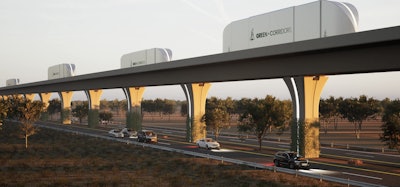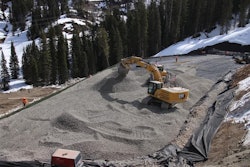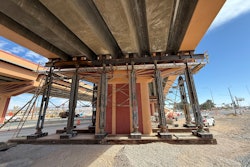
President Donald Trump has given the green light to plans for building an automated, freight-only viaduct corridor stretching 165 miles between the United States and Mexico.
The elevated guideway, set to begin in the southern part of Texas in the City of Laredo and cost roughly $10 billion to construct, will be built by Green Corridors and allow for high-security, non-stop cargo traffic.
In a June executive order, Trump granted Green Corridors permission to “construct, maintain, and operate a commercial elevated guideway crossing” over the Rio Grande River into the state of Nuevo Leon, Mexico.
Key benefits the company advertises for the project include reduced commercial wait times at the border, lowered freight emissions, reduced border transportation operational costs and 24/7 commercial traffic.
Green Corridors has stated it plans to break ground in 36 months and estimates operations will begin in 2031. Current construction plans involve no public funding, instead opting for a business model combining private equity backing with customer fees to move cargo.
The proposed route would have cargo loaded just north of Laredo, Texas, onto the elevated corridor, where an automated tram would transport it in a west-leaning loop along Interstate 35 and Highway 85 from one automated terminal to another just north of Monterrey, Mexico. Logistics companies would book freight travel directly with Green Corridors to move containers.
Renderings show semi-trailers moving back and forth across the border inside sleek, trackable pods – powered by hybrid electric motors – that Green Corridors describes as “impenetrable”. The system would also be used to transport sea containers from the Port of Laredo.
A key element to the plan’s viability is the promised security measures consisting of Green Corridor’s fully autonomous Intelligent Freight Transportation System, which would scan any freight entering or leaving the U.S. to fight drug smuggling, human trafficking and terrorism.
Among Green Corridors’ leaders is former Texas DOT Director of Transportation Planning and Programming Division Peter Smith, who now serves as one of the company’s senior financial advisors.










